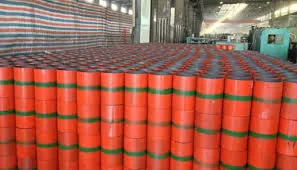- Afrikaans
- Albanian
- Amharic
- Arabic
- Armenian
- Azerbaijani
- Basque
- Belarusian
- Bengali
- Bosnian
- Bulgarian
- Catalan
- Cebuano
- Corsican
- Croatian
- Czech
- Danish
- Dutch
- English
- Esperanto
- Estonian
- Finnish
- French
- Frisian
- Galician
- Georgian
- German
- Greek
- Gujarati
- Haitian Creole
- hausa
- hawaiian
- Hebrew
- Hindi
- Miao
- Hungarian
- Icelandic
- igbo
- Indonesian
- irish
- Italian
- Japanese
- Javanese
- Kannada
- kazakh
- Khmer
- Rwandese
- Korean
- Kurdish
- Kyrgyz
- Lao
- Latin
- Latvian
- Lithuanian
- Luxembourgish
- Macedonian
- Malgashi
- Malay
- Malayalam
- Maltese
- Maori
- Marathi
- Mongolian
- Myanmar
- Nepali
- Norwegian
- Norwegian
- Occitan
- Pashto
- Persian
- Polish
- Portuguese
- Punjabi
- Romanian
- Russian
- Samoan
- Scottish Gaelic
- Serbian
- Sesotho
- Shona
- Sindhi
- Sinhala
- Slovak
- Slovenian
- Somali
- Spanish
- Sundanese
- Swahili
- Swedish
- Tagalog
- Tajik
- Tamil
- Tatar
- Telugu
- Thai
- Turkish
- Turkmen
- Ukrainian
- Urdu
- Uighur
- Uzbek
- Vietnamese
- Welsh
- Bantu
- Yiddish
- Yoruba
- Zulu
Understanding Drill Pipe Pup Joints and Their Importance in Oil and Gas Operations
Understanding Drill Pipe Pup Joints and Their Importance in Drilling Operations
In the field of drilling, particularly in the oil and gas industry, efficiency and precision are paramount. One critical component that plays a vital role in maintaining the integrity of drilling operations is the drill pipe pup joint. Although often overlooked, pup joints serve specific purposes that can significantly impact the success of drilling operations.
A pup joint is a short length of pipe used in the drilling process. It typically ranges from 2 to 12 feet in length and is designed to connect drill pipe sections in various configurations. The term pup joint is derived from its smaller size when compared to standard drill pipe lengths. Despite their modest size, these components are essential for maintaining the overall functional integrity of the drilling string.
Purpose and Functions of Pup Joints
The primary purpose of a pup joint is to provide flexibility in the drilling assembly. Drilling operations often require precise measurements and configurations. Pup joints can be used to adjust the length of the drilling string, allowing operators to achieve the necessary depth and positioning without the need to manufacture entirely new drill pipe sections. This adaptability is particularly valuable in complex drilling environments where depth and angle adjustments are frequently required.
Moreover, pup joints are instrumental in compensating for variations in borehole size and shape. During drilling, the geology of the region can change unexpectedly, leading to complications such as uneven borehole walls or narrow passages. By incorporating pup joints into the drilling string, operators can navigate these challenges more effectively, ensuring a smoother operation.
Types of Pup Joints
Pup joints come in various types, each serving distinct purposes based on the drilling requirements. The most common configurations include
1. Standard Pup Joints These are typically used for straightforward adjustments in drilling operations. 2. Long Pup Joints Longer than standard pup joints, these are used in scenarios where more significant adjustments in length are required.
3. Tool Joint Pup Joints Equipped with tool joints on either end, these pups allow for the easy connection of drilling tools and other equipment.
drill pipe pup joint

4. Specialty Pup Joints These are designed for specific operations or conditions, catering to unique geological challenges.
Material and Manufacturing Considerations
Pup joints are typically manufactured from high-strength steel to withstand the rigors of drilling operations. The selection of materials is critical, as the steel must exhibit properties such as durability, resistance to corrosion, and the ability to handle high levels of stress and pressure. Manufacturers often conduct rigorous testing to ensure the quality and reliability of pup joints before they are deployed in the field.
Furthermore, the manufacturing process of pup joints usually involves threading on both ends to facilitate easy coupling with other drill pipe sections. The precision in threading is essential, as improper threading can lead to leaks or catastrophic failures during drilling.
The Role of Pup Joints in Safety and Efficiency
The incorporation of pup joints significantly enhances both the safety and efficiency of drilling operations. By allowing for quick adjustments and repairs, they minimize downtime, which can be costly in terms of both finances and resources. With the ever-increasing demand for oil and gas, the need for efficient and effective drilling solutions makes pup joints an indispensable part of the drilling landscape.
In addition to operational efficiency, pup joints also contribute to safety measures. By providing more control over the drilling string's configuration and length, operators can reduce the risk of blowouts, which pose significant dangers to personnel and equipment.
Conclusion
In summary, drill pipe pup joints are crucial components in the drilling industry that facilitate flexibility and adaptability in drilling operations. Despite their size, they play a significant role in ensuring efficient, safe, and precise drilling. As the industry continues to evolve, understanding and optimizing the use of pup joints will be paramount in meeting the demands of modern drilling challenges. Emphasizing the quality and reliability of these components will secure safer and more effective drilling outcomes in an ever-demanding landscape.
-
Tubing Pup Joints: Essential Components for Oil and Gas OperationsNewsJul.10,2025
-
Pup Joints: Essential Components for Reliable Drilling OperationsNewsJul.10,2025
-
Pipe Couplings: Connecting Your World EfficientlyNewsJul.10,2025
-
Mastering Oilfield Operations with Quality Tubing and CasingNewsJul.10,2025
-
High-Quality Casing Couplings for Every NeedNewsJul.10,2025
-
Boost Your Drilling Efficiency with Premium Crossover Tools & Seating NipplesNewsJul.10,2025







